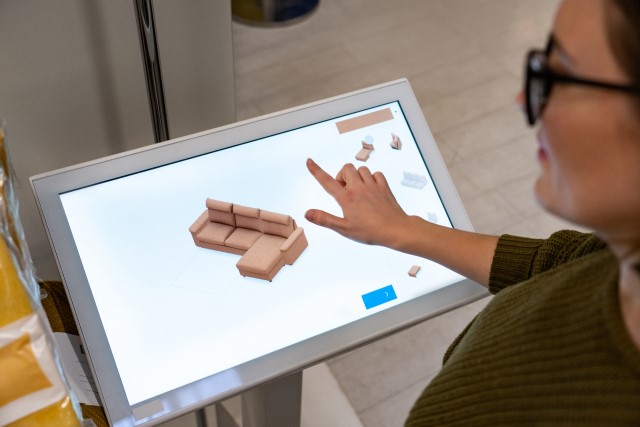Capacitive Touchscreen Vs Resistive
Touchscreens have become an integral part of our daily lives, from smartphones and tablets to interactive kiosks and in-car navigation systems. But how do these touchscreens actually work? Two of the most common types are capacitive and resistive touchscreens, each with its own unique set of characteristics and applications.

Before we look at the differences between resistive and capacitive screens, we should mention a common factor: ITO.
ITO (Indium Tin Oxide) is a transparent yet conductive material which is often utilised to register the touch inputs on both screens, by altering the electric current (in different ways on resistive or capacitive versions) and alerting the device to a particular touch location or gesture.
Resistive Touchscreens: The Basics
Resistive touchscreens utilize a simple principle: two layers of material are separated by a small gap which contains a layer of Indium Tin Oxide. When pressure is applied to the screen, these layers come into contact with the ITO, completing an electrical circuit. This circuit registers the touch location, allowing the device to interpret the user’s input.
Key Features:
Simple Technology: Relatively simple and inexpensive to manufacture.
Works with Various Input Methods: Can be operated with fingers, styluses, and even gloved fingers.
Durable: Generally more resistant to scratches and impacts.
Cost-Effective: Typically more affordable compared to capacitive touchscreens.
Limitations:
Lower Accuracy: Less accurate than capacitive touchscreens, especially regarding multiple touch points.
Limited Response: Can only detect a single touch point at a time.
Lower Image Quality: Can slightly degrade image quality due to the layers required for touch detection.
Capacitive Touchscreens: The Modern Standard
Capacitive touchscreens, now the dominant technology in smartphones and tablets, utilize the electrical properties of the human body. The screen itself is a single layer of conductive material – this could be glass or plastic with a layer of ITO on its surface. When a finger touches the screen, the body’s electrical field disrupts the electrostatic field of the screen, creating a change in capacitance that is detected by the device.
Key Features:
High Accuracy: Highly accurate and responsive to even the slightest touch.
Multi-touch Capabilities: Enables multi-touch gestures such as pinch-to-zoom, rotation, and multi-finger interactions.
Excellent Image Quality: Offers a clearer and more vibrant display experience.
User-Friendly: Provides a more intuitive and responsive user experience.
Limitations:
Less Durable: More susceptible to scratches and screen cracks compared to some resistive touchscreens.
May not work with gloves or other non-conductive objects: Requires direct skin contact for accurate touch detection.
Choosing the Right Touchscreen Technology
The choice between resistive and capacitive touchscreens depends on the specific application and desired user experience.
- Resistive touchscreens are well-suited for applications where cost-effectiveness, durability, and compatibility with various input methods are paramount. They are commonly used in industrial settings, point-of-sale systems, and other applications where accuracy is not the primary concern.
- Capacitive touchscreens are the preferred choice for applications that require high accuracy, multi-touch capabilities, and a superior user experience. They are widely used in smartphones, tablets, and other consumer electronics devices.
At ITO Touch, we specialize in the development and integration of advanced touch technology solutions. Our expertise in ITO materials and cutting-edge touch sensing technologies enables us to deliver innovative and high-performance touchscreens that meet the unique demands of today’s applications.